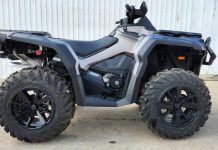When it comes to buying a new car, safety features are often at the top of a driver’s list of priorities. Modern cars come equipped with a range of advanced safety technologies that are designed to protect drivers and passengers in the event of an accident. In this blog post, we’ll discuss some of the most important safety features found on new cars and how they can help keep you safe on the road.
- Automatic Emergency Braking
Automatic Emergency Braking (AEB) is a safety feature that uses sensors and cameras to detect potential collisions and automatically applies the brakes to prevent or minimize the impact of a collision. This technology can detect both pedestrians and other vehicles, making it a valuable addition to any car. AEB can also help reduce the severity of accidents, as it can apply the brakes more quickly and effectively than a human driver in many cases.
- Lane Departure Warning
Lane Departure Warning (LDW) is a feature that alerts drivers when they start to drift out of their lane without signaling. This technology uses sensors and cameras to detect the position of the car on the road and can provide visual or auditory warnings to alert the driver. LDW can help prevent accidents caused by distracted or drowsy driving, as well as accidents caused by drifting into other lanes.
- Blind Spot Monitoring
Blind Spot Monitoring (BSM) is a feature that uses sensors to detect vehicles in a driver’s blind spot. This technology provides visual or auditory alerts to warn the driver when another vehicle is in their blind spot, making it easier to change lanes safely. BSM can help prevent accidents caused by merging into other vehicles and can also help reduce driver stress and anxiety while driving.
- Rearview Camera
A rearview camera is a safety feature that provides a view of the area behind the car while backing up. This technology can help prevent accidents caused by blind spots or objects that are not visible through the rearview or side mirrors. A rearview camera is especially useful for drivers of larger vehicles, such as trucks and SUVs, which may have limited visibility when backing up.
- Adaptive Cruise Control
Adaptive Cruise Control (ACC) is a feature that automatically adjusts the speed of the car to maintain a safe distance from other vehicles on the road. This technology uses sensors and cameras to detect the position of other vehicles and can slow down or speed up the car to maintain a safe following distance. ACC can help prevent accidents caused by tailgating or sudden stops in traffic.
- Airbags
Airbags are a standard safety feature found in all modern cars. They are designed to inflate quickly in the event of an accident, providing a cushion for the driver and passengers and helping to prevent serious injuries. Most cars have multiple airbags, including front airbags for the driver and passenger, side airbags, and curtain airbags that deploy from the roof.
- Electronic Stability Control
Electronic Stability Control (ESC) is a feature that helps drivers maintain control of their vehicle in difficult driving conditions. ESC uses sensors to detect when the car is losing traction or stability and automatically adjusts the brakes and throttle to help the driver regain control. ESC can help prevent accidents caused by skidding, oversteering, or understeering and is particularly useful in wet or icy conditions.
- Tire Pressure Monitoring
Tire Pressure Monitoring (TPM) is a feature that alerts drivers when the tire pressure in one or more tires is low. Low tire pressure can cause poor handling, reduced fuel efficiency, and increased risk of blowouts or accidents. TPM uses sensors in each tire to detect changes in pressure and can provide visual or auditory warnings to alert the driver.
- Anti-lock Brakes
Anti-lock Brakes (ABS) are a standard safety feature found in all modern cars. ABS helps prevent brakes from locking up and therefore unsafe driving circumstances.






